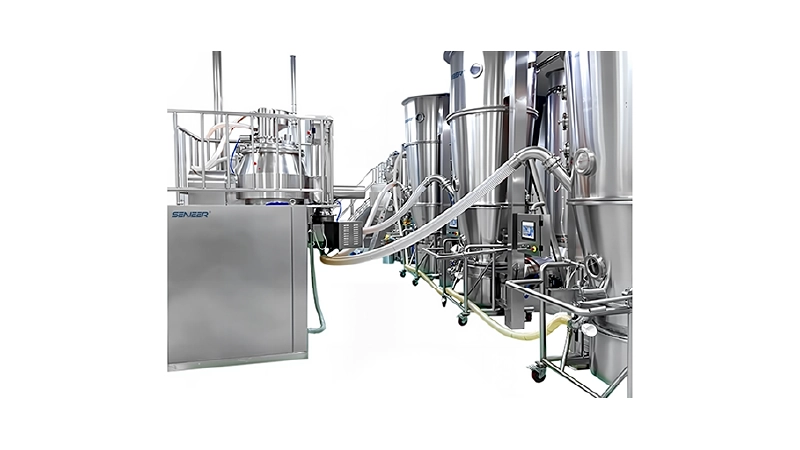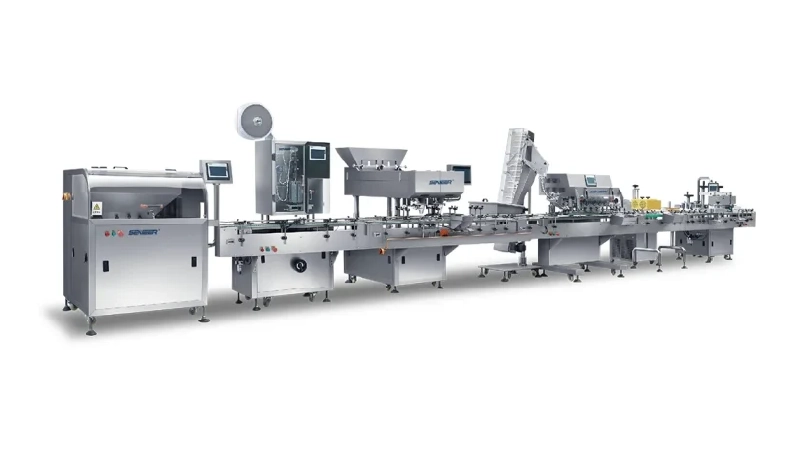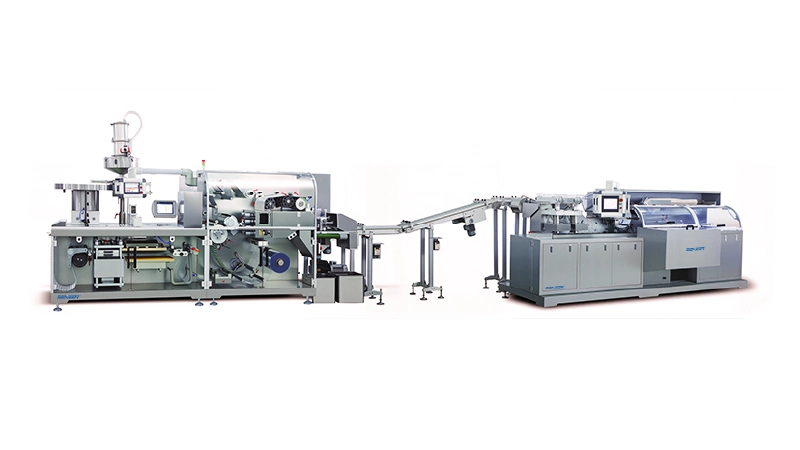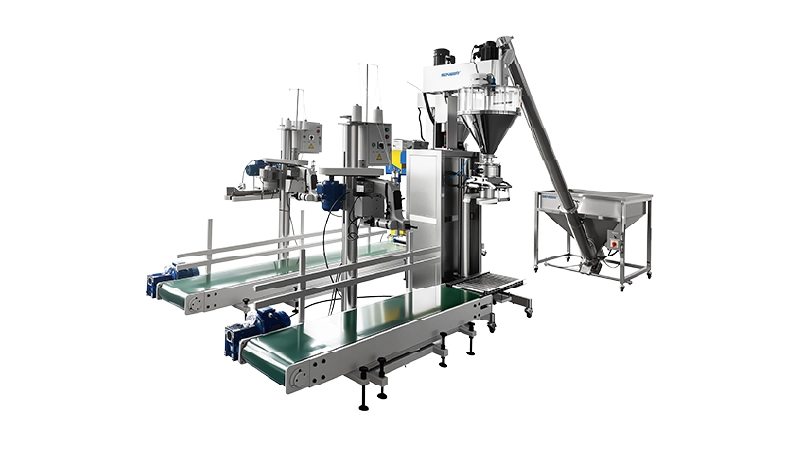Cleanroom Panel
- Our modular cleanroom panels are designed to meet your factory needs
- Our cleanroom panel production cleanrooms are ISO class 8 clean rooms with HEPA filter units to ensure clean air for clean products
Cleanroom Panel : Product Description
Sandwich cleanroom panels are an essential component in the construction of cleanrooms and controlled environments, providing a reliable and versatile solution for maintaining strict cleanliness and environmental control standards. Their layered construction and modularity make them a popular choice for industries like pharmaceuticals, biotechnology, electronics, and semiconductor manufacturing, among others.
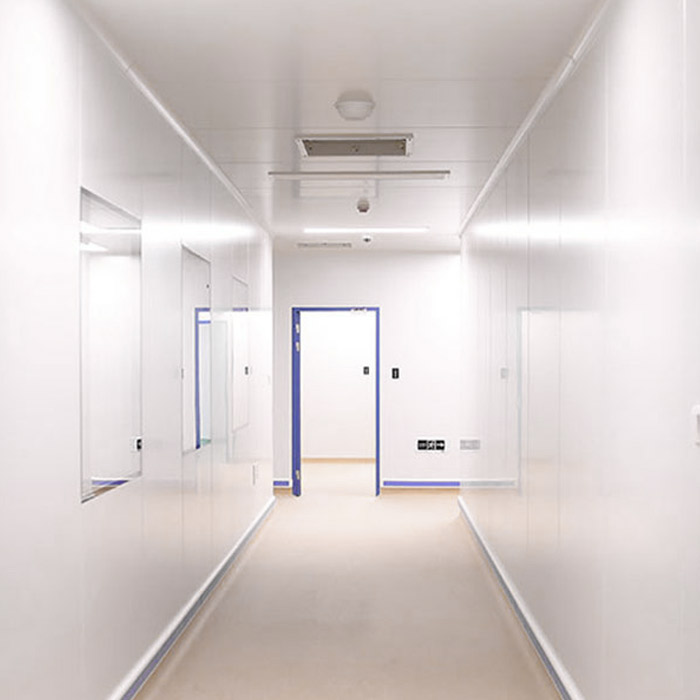
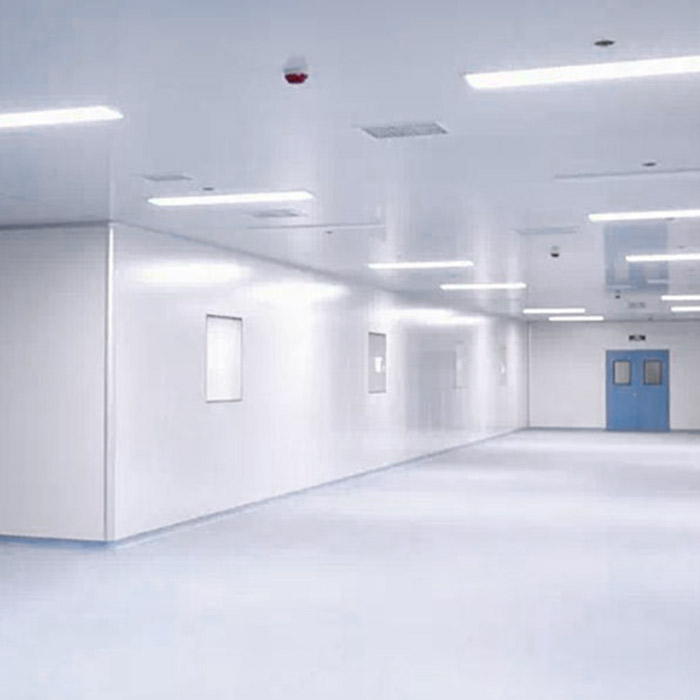
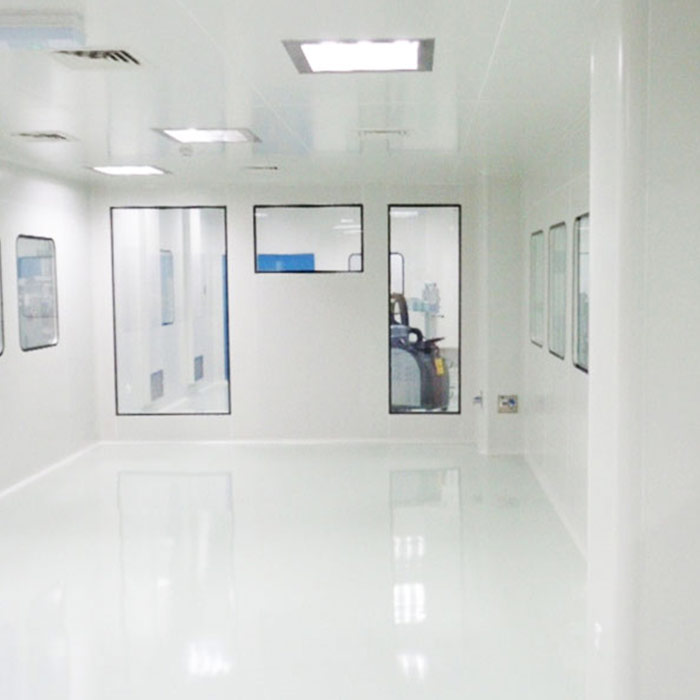
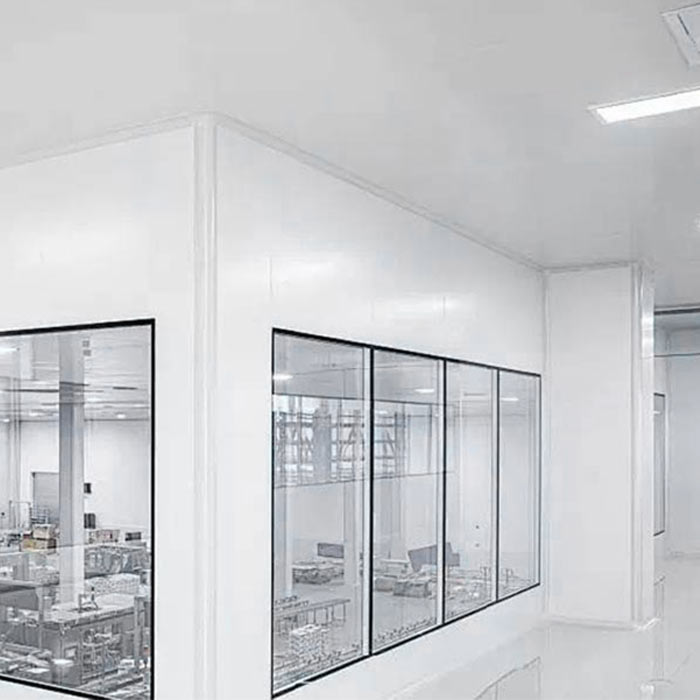
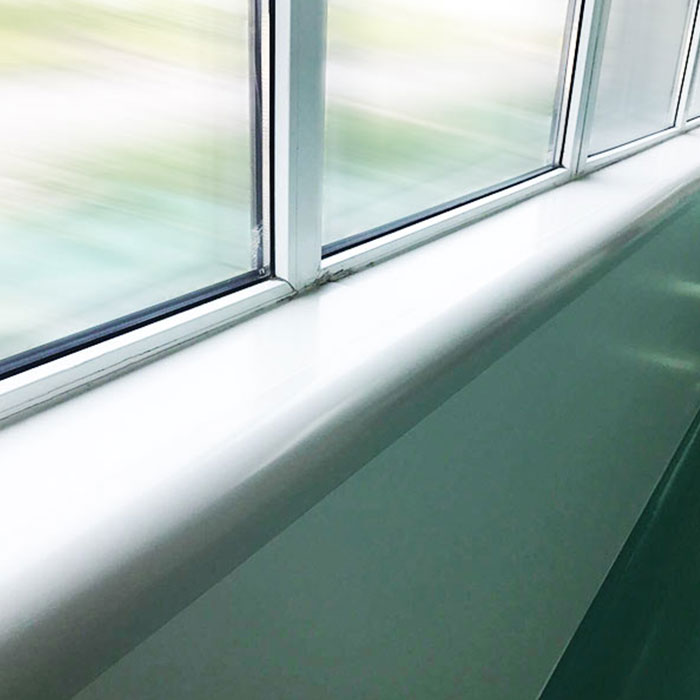
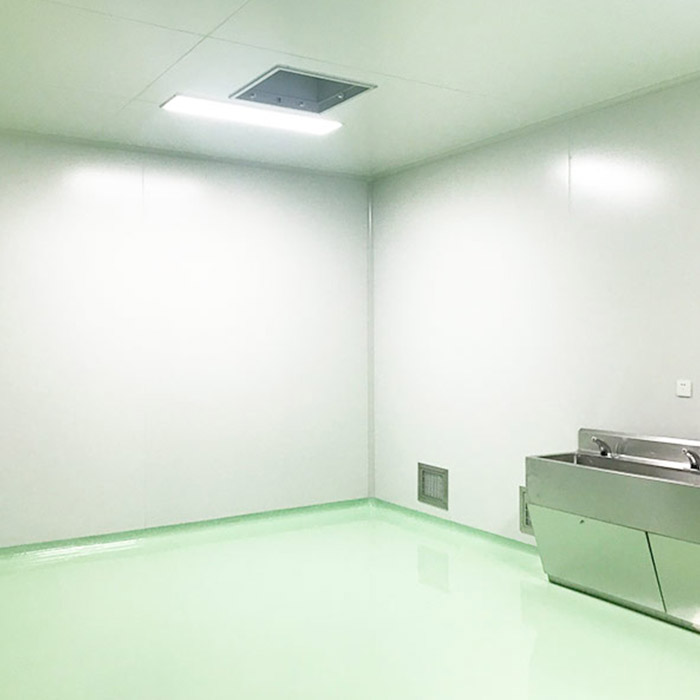
Paramenter of Cleanroom Panel
◈ Quality materials: cleanroom panels are made of industrial clean panels and aluminum profiles, coated with a clean polypropylene finish.
◈ Easy to clean: cleanroom wall surface is smooth, and it can be cleaned by just water or mild detergent. It doesn’t need any chemicals for cleaning.
◈ Borderless design: The cleanroom panels feature a continuous or seamless design. There is no interruption in cleanrooms, so cleanroom walls are easy to clean and it’s also easier for the operation of cleanrooms.
◈ Temperature: cleanrooms panels have unlimited temperature resistance from -30oC to +70oC. They can resist the negative impact of hot air in winter and hot/humid air in summer.
◈ Easy to clean: cleanroom panels are easy to clean and keep clean without the use of chemicals or special equipment. The cleanrooms can be cleaned with water, mild detergent, and a cloth.
◈ Durability: cleanroom panels can withstand large amounts of stress. This cleanrooms have a cleanroom wall thickness of 2 cm (1″) and clean rooms are made from clean polypropylene paneling that is coated with aluminum profiles, which gives cleanrooms clean extra strength.
◈ Ventilation: cleanroom panels can perfectly meet your needs for clean air production. Our cleanroom panels are ISO cleanrooms cleanroom panels with HEPA filter clean panels to ensure clean air for clean products.
◈ Fireproof: The cleanroom walls can resist fire cleanroom clean air and clean panel cleanrooms are made of clean polypropylene cleanrooms wall panels that won’t leave any toxic residue in the event of a fire.
◈ Versatile as can be used for a wide range of applications
◈ Strong and durable
◈ Can be easily customized
◈ Affordable
◈ Easy and ready to install
More Details Of Cleanroom Panels
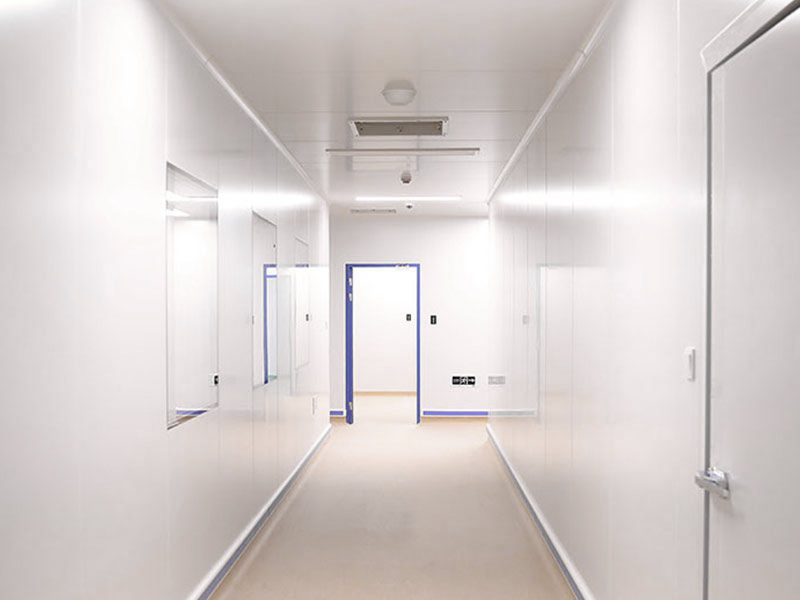
ISO Class 5 Cleanroom Panel
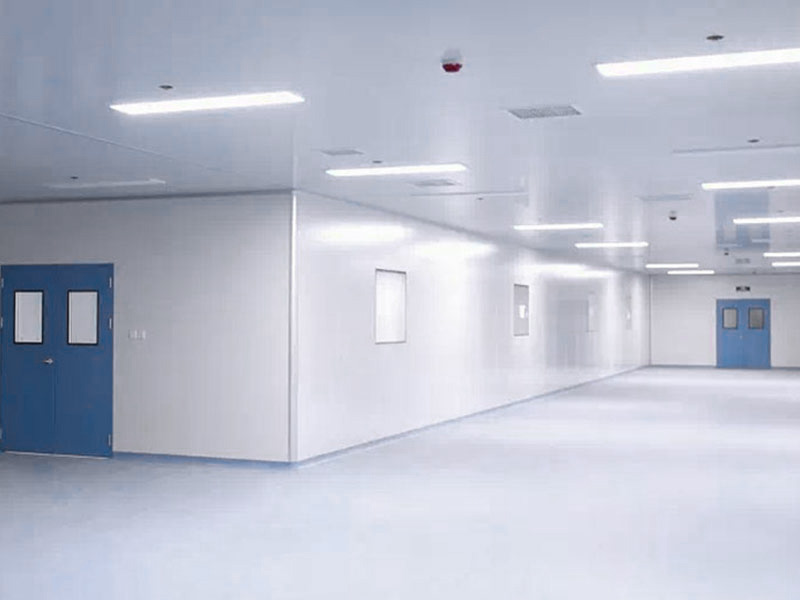
ISO Class 7 Cleanroom Panel
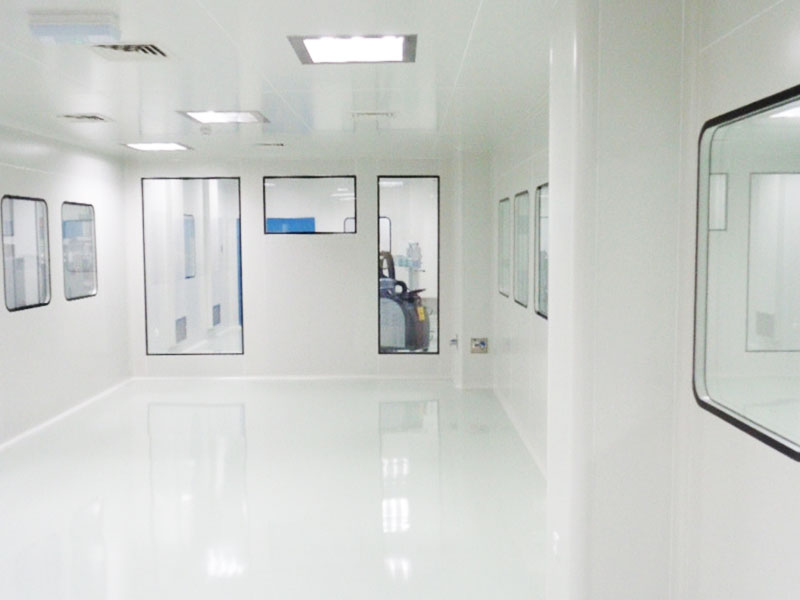
ISO Class 9 Cleanroom Panel
Any Question About Senieer Cleanroom Panel
Why Global Company Trust Senieer
Top Quality Factory Price
We have a quality control department to verify each product at different phases, from the procurement of parts to finished products
As Your Layout, Customize Machine
According to your layout, we can suggest the best capacity and type for you, customize cleanroom panel for you
Cleanroom Panel Consult & Design Service
Save energy resource for you, professional engineers can improve the best processing solution. We have the experience to help add a tremendous amount of value to your project
ISO.CE Standard Qualified
We successfully obtaining the ISO9001:2008 certificate and CE security management system certificate, this is significant for Senieer in building enterprise image
Cleanroom Panel Training & Maintance Service
Free cleanroom panel training & maintenance service for you, we will provide your team in-depth training on safe operation and cleanroom panel maintenance
Cleanroom Panel Installation Service
Senieer offers cleanroom panel installation & commissioning service for production products, your cleanroom panel and control systems are qualified based on the GAMP life-cycle
Cleanroom Panel Complete Buying Guide for Importers
Let’s dive right in:
- Chapter 1: What is a cleanroom panel?
- Chapter 2: Reasons to use cleanroom panels
- Chapter 3: Cleanroom Panel Working Principle
- Chapter 4: Applications of Cleanroom Panels
- Chapter 5: Cleanroom Panel Components and Construction
- Chapter 6: Factors to Consider When Buying Cleanroom Panel
- Chapter 7: Frequently Asked Questions about Cleanroom Panel
- Chapter 8: Choosing a Cleanroom Panel Manufacturer in China

Are you planning to buy new cleanroom panels? Or hoping to upgrade your current panels to better ones? Here is a perfect guide for you. We are going to discuss everything that you should know about cleanroom panel systems. At the end of this guide, you will be able to make a smart decision regarding the purchase of this product.
Chapter 1: What is a cleanroom panel?
A cleanroom panel is a wall-mounted air filtration system. It is the best cleanroom technology when it comes to air purification and cleanliness. This kind of panel uses HEPA filters to clean the resistant bacterial or foreign particles. The cleanroom panels can be mounted on walls, ceilings, or floors.
Cleanrooms are present in various applications like research laboratories, semiconductor manufacturing plants, pharmaceutical production facilities, etc. These modular cleanrooms come with different cleanliness levels based on industry standards and ISO 14644-1 rating systems such as ISO 5, 6, 7, or 8.
Cleanroom systems have an atmosphere where harmful agents like bacteria and microorganisms are kept at bay by negative air pressure created within its interior space concerning atmospheric pressure outside.
Such cleanrooms are expected to maintain cleanliness levels from 10 to 100 or even higher with 0.1 being the cleanest and 10 being the dirtiest rating possible.
Cleanroom air is circulated within the cleanroom through a series of ducts and wall-mounted cleanroom panels. They can achieve this by drawing clean air from the clean side of the panel into a clean zone area where it is allowed to pass through HEPA filters before reaching back into a clean zone.
The flow keeps continuous inside the closed-loop system present in most cleanrooms, depending on its design and configuration.
Cleanroom panels can be installed anywhere at various locations required by the buyer like columns, walls, floors, and ceilings as per their choice for easy installation. All they need to do is clean the surface and apply Peel & Stick adhesive to fix it in place.
Chapter 2: Reasons to use cleanroom panels
Dirty air can pose serious health risks and cleanroom wall panel technology helps address these problems by supplying clean air for employees to work in while also protecting their surroundings from pollution. In addition, cleanrooms are used as a secure barrier where deadly viruses or harmful bacteria cannot harm people outside or escape the room they are contained within.

Clean air is essential for keeping production plants or factories clean. This implies that preventing frequent injuries and errors which may result in expensive product recalls due to contamination.
Eliminating airborne particles prevents them from affecting sensitive products like wafers being manufactured on computer chips, pharmaceuticals being developed from chemicals, etc.
Clean rooms are also used to protect clean rooms from contamination by cleanroom wall panels that keep the clean air inside the room clean and circulate dirty air outside it.
Cleanrooms can be a clean, sanitized, safe, and bacteria-free environment for sensitive experiments or procedures where new products are being developed.
A cleanroom is best suited for biological research, chemical analysis, drug production, or other scientific investigations done in controlled conditions.
This environment creates opportunities for conducting tests with more possibilities for success.
Companies manufacturing pharmaceuticals must comply with FDA guidelines. Thus keeping cleanroom systems clean will help them reduce product recalls due to microbial contamination which costs billions of dollars each year.
Cleanroom panel technology helps anti-microbial treatments to work more efficiently and effectively by ensuring all airborne particles are kept clean.
Research shows cleanroom panels can help clean air from being contaminated during application.
Thus protecting humans and sensitive surroundings from harmful substances such as viruses that could escape into the outside environment.
Chapter 3: Cleanroom Panel Working Principle

A cleanroom panel is a wall-mounted unit that takes clean air from the clean side to exhaust polluted air through HEPA filters on the dirty side.
It helps maintain a level of the quality atmosphere inside the room by taking in pure exterior air and exhausting it back onto itself after allowing it to pass through a filtration system installed within its boundaries.
The clean zone lies between two sides – dirty and clean with the former intended for the passage of exhaust while filtered clean air passes through the latter. Clean often refers to clean air while a clean zone is that part of the cleanroom system designated for clean air circulation.
Cleanroom wall panels are equipped with a series of metal and plastic ducts that clean incoming and outgoing air to filter contaminants present inside them.
Filters used within its interior work together to create a clean zone where microbes or airborne bacteria can be killed by using ultraviolet radiation before being released into the atmosphere again.
This further helps in increasing the efficiency rate at which cleanrooms operate. These panels feature electrostatic filters made up of aluminum oxide or zeolite with an ion exchange resin treatment backed up by an electronic charge.
They help remove fine particles, thus keeping cleanroom modular panels as clean as possible. Clean wall room panels act as a safeguard against dust, smoke, fumes, odors, and other airborne contaminants that can affect clean rooms.
Cleanroom panel systems clean air by filtering solid pollutants like mold spores, pollen grains, and bacteria. They also filter gases, vapors, or particles which are smaller than 1 micron in size including tobacco smoke, clean room clouds of dust, and gasses formed during the cleaning process itself.
The electrostatic force generated at a cleanroom panel’s surface attracts these airborne substances to the filtration system where they stick to it for easy removal.
Cleanup is achieved by simply turning on the cleanroom panel’s extractor fan which pulls out all dirt particles attached to it. It then expels them into the surrounding atmosphere through HEPA filters. In addition, cleanroom panels also purify incoming clean air for any contaminants present.

Cleanrooms are clean because of cleanroom panels and the filtration system within them. They ensure cleanliness is maintained and require less intense cleaning to help prevent the spread of hazardous bacteria into clean rooms. Thus preventing product contamination which costs billions of dollars yearly.
Cleanroom panel systems must be regularly checked during installation to ensure it meets health standards set forth by FDA or ISO 14644-1 & 2 . This includes testing that will show its ability to clean incoming air while filtering out airborne microorganisms.
Chapter 4: Applications of Cleanroom Panels
Cleanroom panels are used in different fields and industries. Some of these application areas include:
Pharmaceuticals
Cleanroom panels are used to clean cleanrooms in pharmaceutical laboratories where clean air circulation is necessary. Their primary function here is to eliminate airborne contaminants by filtering incoming clean air and removing them from the clean zone inside cleanroom panels. Filters installed within these walls are cleaned continuously to ensure they do not get clogged with particles which could affect the quality of clean air circulating within cleanrooms.
Food & Beverage Manufacturers
These applications are crucial for food and beverage manufacturers as their products could be contaminated easily if there is a problem with contamination control measures set up in clean rooms.
The same applies when it comes to pharmaceuticals where cleanroom panels help keep cleanrooms laminar, thus increasing efficiency and cleanliness.
Chemical laboratory:
Cleanroom wall panels are used to clean cleanrooms in chemical laboratories where clean air circulation is necessary. Their primary function here is to eliminate airborne contaminants by filtering incoming clean air and removing them from the clean zone inside cleanroom panels.
Filters installed within these walls are cleaned continuously to ensure they do not get clogged with particles which could affect the quality of clean air circulating within cleanrooms.
Medical Facilities
These applications are crucial for medical facilities as their products could be contaminated easily if there is a problem with contamination control measures set up in clean rooms.
The same applies when it comes to pharmaceuticals where cleanroom panel systems help keep cleanrooms laminar, thus increasing efficiency and cleanliness.
Chapter 5: Cleanroom Panel Components and Construction

A typical cleanroom panel consists of cleanroom walls and a clean air filtration system. Clean rooms are designed to produce the cleanest environment possible. This makes cleanroom panels an indispensable component that helps keep cleanrooms clean by filtering clean room air.
These panels are made from a variety of materials, but all work toward one goal: ensuring cleanliness within cleanrooms.
Cleanroom wall panels or clean air filter kits include the following components: cleanroom walls, clean air filtration system (filter and fan), support frame where these items can be attached firmly and efficiently.
The construction details will depend on materials used in constructing the cleanroom wall itself as well as its working environment. Designers who know what makes a good cleanroom panel have created an excellent product you should buy that can clean cleanrooms perfectly.
Cleanroom wall panels
-Aluminum Alloy: Aluminum is a durable material that makes it suitable for use as a cleanroom wall panel material. It can withstand intense cleaning and physical contact without wearing out or weakening significantly. This makes aluminum alloy sheets excellent choices for constructing cleanrooms and using them as cleanroom wall panels. They are also easy to handle with simple tools.
-Steel sheet metal: cleanroom panels made from steel are lightweight and resistant to rust. They are durable, clean rooms. However, cleanroom wall panels made of this material tend to dent easily when hit by objects which could make cleanrooms look shabby over time.
Cleanroom Panel Sizes:
All cleanroom wall panels’ sizes are customized, depending on cleanroom size and construction materials used. They can be from 1.5m/5ft to 2.2m/7ft tall and from 0.25m/1ft square to 1m/3ft wide.
You should choose cleanrooms based on clean rooms dimensions in mm or inches according to your cleanliness requirements for the working environment where they will be installed.
These can be used as cleanroom walls, clean air filter kits, clean rooms panels, cleanroom curtains, or clean air filters depending on the user’s need.
They could also be manufactured specifically for scientific experiments that require extremely high levels of cleanliness.
All cleanroom wall panels’ sizes are customized, depending on cleanroom size and construction materials used. They can be from 1.5m/5ft to 2.2m/7ft tall and from 0.25m/1ft square to 1m/3 ft. wide.
You should choose cleanroom panel systems based on cleanroom wall panel dimensions in mm or inches according to your cleanliness requirements for the working environment where they will be installed.
These can be used as cleanroom walls, clean air filter kits, clean rooms panels, cleanroom curtains, or clean air filters depending on the user’s need. They could also be manufactured specifically for scientific experiments that require extremely high levels of cleanliness.

Cleanroom filtration system
Filters on clean rooms walls help maintain cleanrooms ‘ sterility by filtering out all airborne contaminants in the working environment where they are installed. While clean rooms panels filter only removes about half of the chemical particle contamination.
However, some industries may require greater than 99% efficiency due to highly sensitive operations thus calling for more complex yet efficient cleanroom panel clean rooms.
This could be achieved through clean air filtration systems (filter and fan) that are engineered with more efficient filters, better airflow, or both.
Support frame
This is another important component of a cleanroom panel system. It holds cleanroom walls and clean air filters in place, keeping them free from contamination.
It is made of cleanroom clean materials like PVC pipes, PVC sheeting, or stainless steel to ensure cleanliness as well as durability.
These support frames are usually made of cleanroom wall panels material that matches cleanrooms on the panels installed for extra protection even when exposed to extreme environments.
Often, cleanroom panel installers use this framework in a modular way by fitting it along clean rooms walls during installation and anchoring it into corners for greater structural stability.
Chapter 6: Factors to Consider When Buying Cleanroom Panel
Here are the key factors that you should consider when buying cleanroom panels:
Application area
The application area will help in determining classification is based on cleanliness level required in the working environment where clean rooms will be installed. For clean areas, international standards specify that air contaminants should not exceed one particle per cubic meter of air (1/m3) , while cleanrooms need to have no more than ten particles per cubic meter of clean air (10/m3).
Size
Cleanroom wall panels are also classified into standard clean rooms cleanrooms, medium cleanrooms, small cleanroom panels, and large clean rooms cleanrooms.
The first is great for control contamination in small offices where products are designed or developed. While the last can be used in laboratories where highly sensitive testing is conducted – for example, DNA analysis or pharmaceutical research.
On the other clean areas clean rooms, medium clean rooms cleanrooms are best for applications like computer hardware manufacturing while standard clean rooms cleanrooms are used in the food industry.

Material of the panels
You should also look at the materials of cleanrooms panels to determine suitability for your cleanroom needs.
The most common cleanrooms materials include stainless steel (for heavy-duty applications), aluminum alloy, PVC, high-density polyethylene, acrylonitrile butadiene styrene, and glass.
Stainless steel offers the best airflow; aluminum cleanrooms are lightweight and offer versatile design options; PVC cleanroom panels are affordable, durable, and easy to install.
Air clean technology
As cleanroom cleanliness is attained through careful design of airflow, an equally important part of cleanroom panels is its clean air filters. They are engineered with different technologies like HEPA (high-efficiency particulate arrestance), ULPA (ultra-low penetration air), and ENVIRO-HEPA to clean the cleanroom’s air as well as control airborne contaminants.
On the other hand, cleanrooms filters are made of high-speed rotating HEPA to stop even very fine dust and particles while maintaining sterile conditions – all while retaining cleanliness.
Design
The design of cleanroom panels is also important in maintaining cleanliness. You should look for cleanrooms that are designed with anti-bacterial material to stop the growth of microorganisms and ensure clean purity.
Durability
When it comes to cleanroom panels, you must choose one that can withstand the environment where it will be installed.
This is important because cleanroom systems that are not durable will be of low quality while cleanroom wall panels for clean areas also need to withstand harsh outdoor conditions.
Ventilation
Since cleanroom systems rely on airflow for cleanliness, the ventilation system in them must be a key consideration. Inside the cleanrooms, proper ventilation is carried out through several panel vents and exhaust fans.
Chapter 7: Frequently Asked Questions about Cleanroom Panel

Why do we use yellow light in the cleanroom panel?
Yellow light is used because it has the least influence on cleanroom air. It is because yellow light carries less energy than other cleanroom lights and hence it deposits fewer impurities into cleanroom air.
What is meant by Clean Room Rating (CRL)?
A cleanroom rating is a cleanliness rating of a cleanroom, which indicates the cleanliness level in the cleanroom.
What cleanliness rating cleanrooms are available in the market?
There are clean rooms with cleanroom ratings of ISO 4, ISO 8, ISO 12, ISO 14, and ISO 16. Clean rooms are also available with cleanroom ratings between International Standards Organization (ISO) numbers 1-16. All cleanroom panels come with a cleanroom rating.
What is cleanroom protocol?
Cleanroom protocol is a set of cleanliness procedures to be followed in cleanrooms. This cleanliness procedure includes cleanroom clothing, cleanroom maintenance, and other cleanliness protocols.
What does the cleanroom gap mean?
There is a gap present between the edge of the clean room window panel and the cleanroom wall. Cleanness experts use this gap as an indicator of cleanliness. The clean gap offers less resistance to cleanroom air and hence cleanroom window panels are fitted in clean gaps to keep the cleanliness of cleanroom panels intact.
What is cleanroom space?
Cleanroom space is the area inside which we work in a clean environment while keeping the area outside as dirty as it is.
What clean cleanroom panels are?

Clean cleanroom panels mean cleanroom panels without any dead angles. Dead cleanroom panels include cleanroom windows and cleanrooms with glass walls.
These dead clean rooms have dead angles that cannot be cleaned properly, which are a potential source of microorganisms or dust deposition inside the cleanroom space.
Hence clean cleanroom panels are being used in cleanrooms to have clean air inside the clean environment while keeping outside dirty.
Why do we use cleanroom panels with light monitors?
Light monitors contain led relatively clean lights! They have fewer impurities as compared to Fluorescent lights which contain mercury and emit UV rays which are harmful to a cleanroom environment.
Why cleanroom panels are being used in cleanrooms?
Clean cleanroom panels are being used because they do not allow any dead angles inside the cleanroom space where dirt or particles can get stuck while working inside cleanrooms. Clean cleanroom panels also play an important role in maintaining the cleanliness of clean rooms.
Is a clean cleanroom panel the same as a cleanroom window?
Cleanroom panels are more important than clean cleanroom windows which are also called cleanroom areas in cleanrooms. Cleanroom panels do not have any dead angle inside them, like cleanroom windows and hence they can be cleaned properly to keep them dust-free and clean.
Chapter 8: Choosing a Cleanroom Panel Manufacturer in China
Now it is time to buy the best cleanroom panels in China. It is important to buy from reliable cleanroom panel manufacturers and suppliers in China.
It is very important to go through cleanroom panel reviews before ordering clean room panels.
We can choose from various cleanroom panel suppliers but it is always better to buy from cleanroom panel manufacturers in China, as they have the expertise and experience required for manufacturing cleanrooms.
There are several cleanroom glass manufacturers in China, which makes buying cleanroom panels in china much easier than ever before.
Conclusion
Cleanroom panels are perfect solutions for pharmaceuticals, the food industry, chemicals labs, and medical facilities among others.
Cleanroom panels are being used in cleanrooms to have clean air inside the clean environment while keeping outside dirty.
Whenever you want to buy cleanroom panels for sale, consider buying from reputable manufacturers and suppliers.






